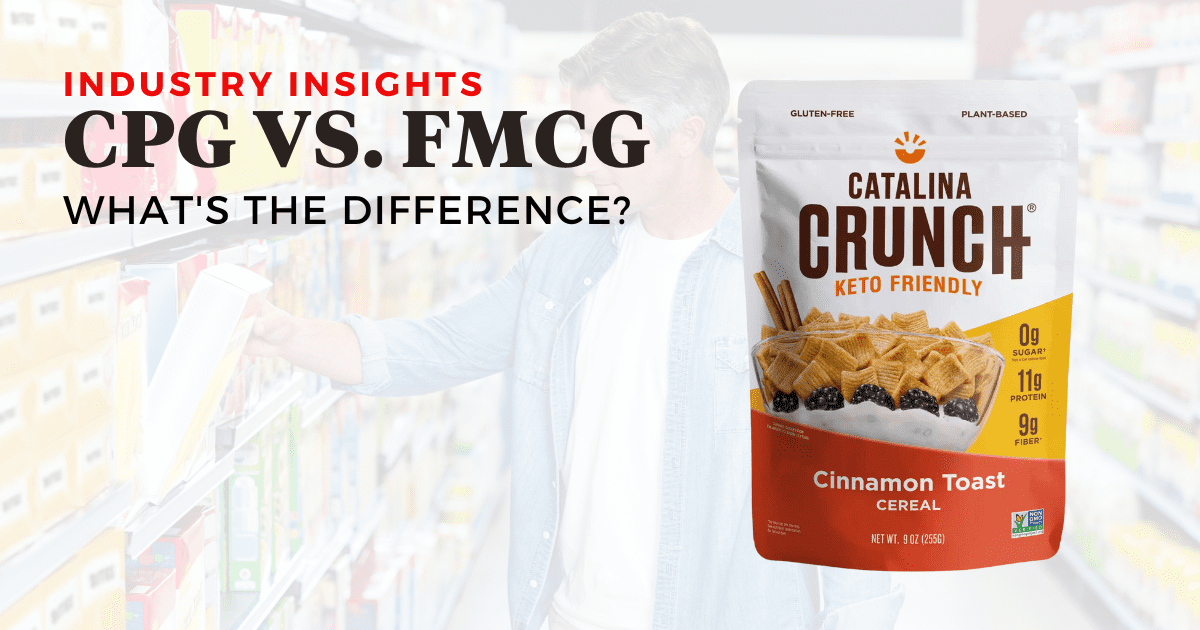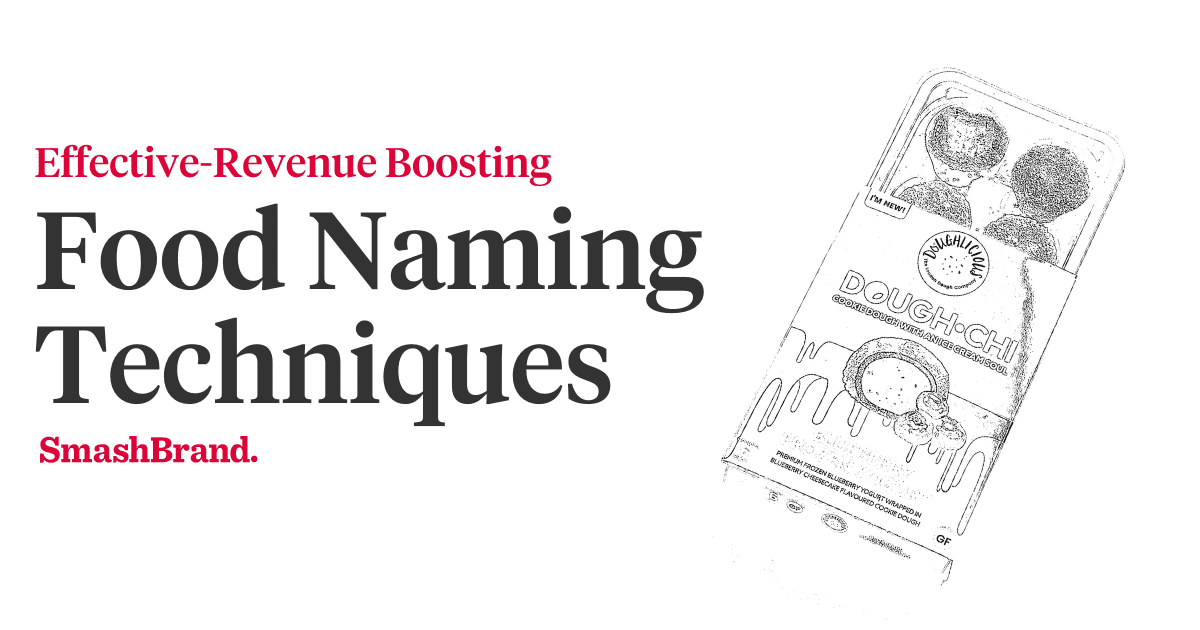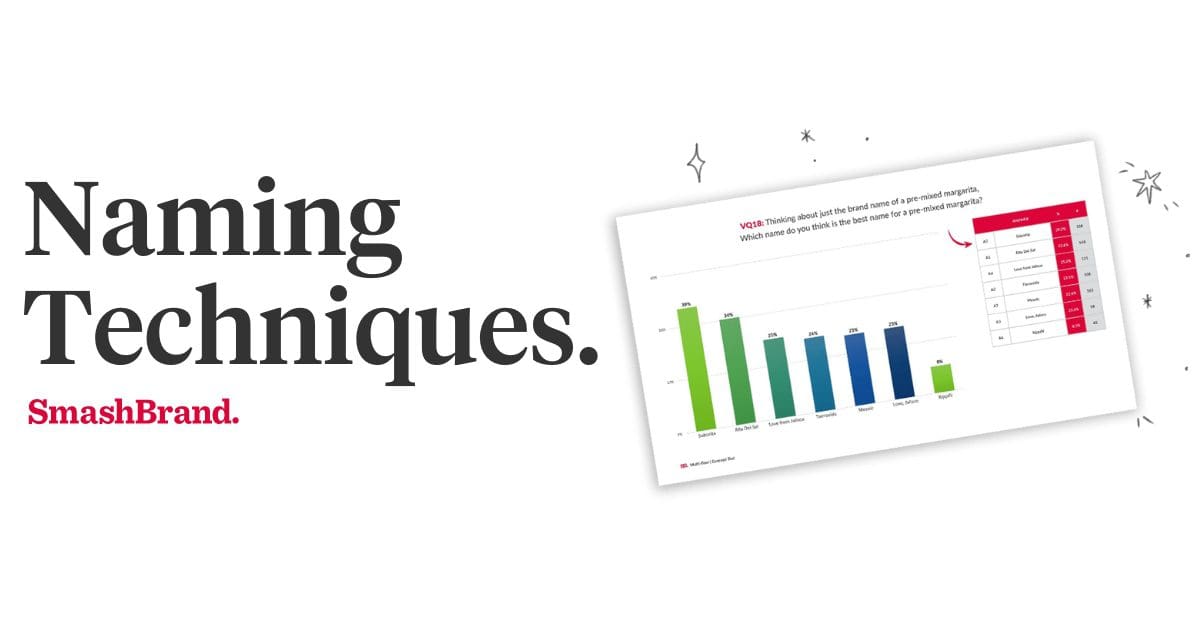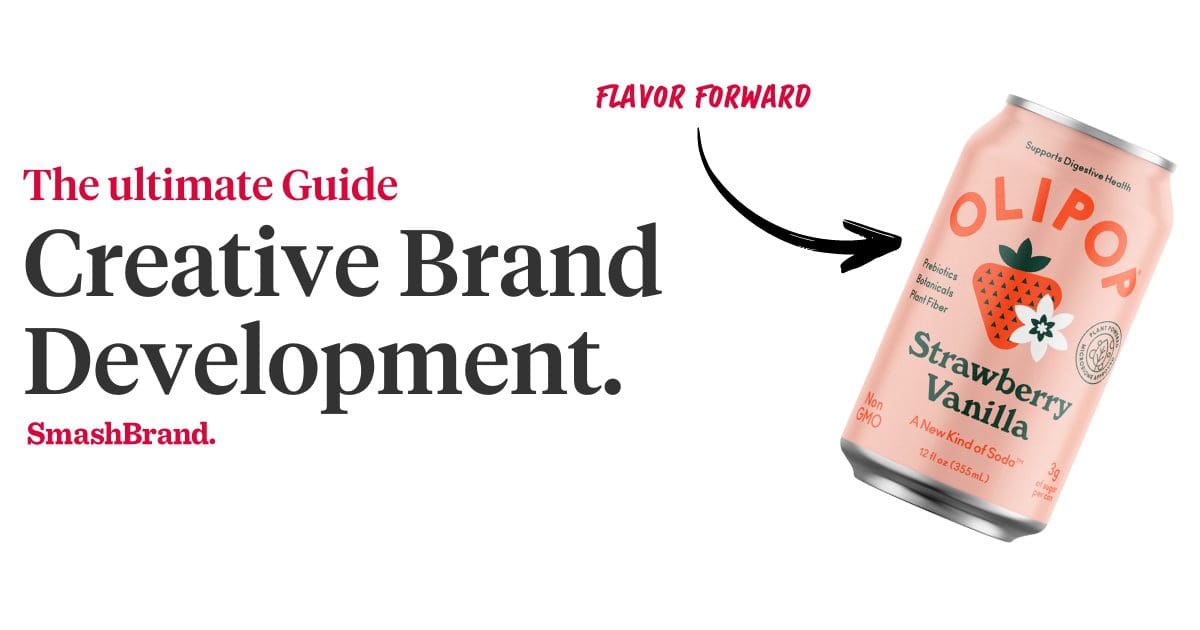Listen to This Article

Consumer packaged goods (CPG) and fast-moving consumer goods (FMCG) are often interchangeably used industry terms. However, some key differences between these two terms are necessary to understand, especially for those who work in marketing and sales. This article compares CPG vs. FMCG, exploring the differences that matter for development, branding, marketing, and sales.
Whether you’re a business owner looking to expand your product line or a marketer trying to reach new customers, understanding the nuances of CPG vs. FMCG can help you make better decisions and achieve tremendous success.
So let’s dive in and explore these two important terms in more detail.
Get your Hands on the SmashReport!
And enter to win a FREE brand diagnosis worth $20,000.
*The SmashReport is a monthly newsletter for FMCG and CPG brands, helping them stand out in the competitive retail marketplace.
What is CPG?
Consumer Packaged Goods (CPG) refer to any product the general public consumes. These consumer products are typically sold through retailers in packaging designed to be consumed once they open the product.
Categories where will find a CPG company include:
- Food and Beverage: This includes packaged foods, snacks, beverages, and other edible items that are sold in grocery stores and supermarkets.
- Personal Care and Beauty: This category covers products like cosmetics, skincare, hair care, oral care, and personal hygiene items like soap, body wash, and deodorant.
- Household Products: This category includes cleaning products like detergents, disinfectants, and cleaning tools, as well as home goods like paper products, storage containers, and small appliances.
- Pharmaceuticals: This includes over-the-counter medications, vitamins, and supplements.
- Baby and Child Products: This category covers products like diapers, baby food, formula, and toys.
- Pet Products: This category includes food, treats, toys, and other products for pets like dogs and cats.
CPG brands are known for their mass-market appeal, and they often rely heavily on advertising and marketing campaigns to build brand awareness and drive sales. The CPG industry is highly competitive, with new products continuously entering the market, replacing outdated or poorly marketed ones.
One of the main differences between CPGs and other consumer goods is that CPGs include occasional-use products and consumer durable goods, which means they are expected to last a relatively long time.
For example, a bottle of shampoo or a package of paper towels is likely to last for several uses before needing to be replaced.
CPG products sell through various retail channels, including supermarkets, drug stores, convenience stores, and mass merchandisers. Because these products have various price points and their turnover rates differ.
What is FMCG?
FMCG (Fast Moving Consumer Goods) are products consumers use daily or repeatedly throughout the week. These goods are also known as Fast-Moving Consumer Packaged Goods (FMCPG).
FMCG products are typically purchased frequently and have a short shelf life. Examples of FMCG products include:
- Personal Care and Beauty Products: Items such as toothpaste, shampoo, conditioner, soap, body wash, deodorant, razors, shaving cream, and other grooming products are used daily by most people.
- Packaged Foods: Fast-moving packaged foods include bread, breakfast cereals, rice, pasta, noodles, canned soups, and sauces. These are items that people buy and consume frequently.
- Beverages: Products like coffee, tea, soft drinks, and bottled water are consumed daily or multiple times a day by many people.
- Cleaning Products: Fast-moving cleaning products include laundry detergents, fabric softeners, all-purpose cleaners, and dishwashing liquids that are used frequently for household chores.
- Paper Products: Items such as toilet paper, facial tissues, paper towels, and napkins are consumed regularly and quickly.
- OTC Medications: Medications such as pain relievers, cold and flu remedies, and digestive aids are used frequently for minor ailments.
- Confectionery: Items like chocolates, candies, and gums are consumed daily as snacks or desserts.
- Pet Food: Many pet owners purchase pet food regularly, making it a fast-moving consumer good.
You probably noticed some crossover between CPG and FMCG, and that isn’t a mistake. The distinction for what moves a CPG product into the FMCG category is when a consumer product is used quickly and frequently, making them a key part of daily life.
FMCG companies are known for their ability to quickly and efficiently produce and distribute products consumers regularly need. These companies rely heavily on brand loyalty and marketing to maintain their market position. FMCG companies often have an extensive portfolio of products catering to different market segments.
One of the distinct features of FMCG products is their low cost, which makes them accessible to a wide range of consumers. There are still differences in an FMCG pricing strategy as products range from economical to premium pricing models. FMCG products well through FMCG retail channels such as specialty stores, supermarkets, hypermarkets, and convenience stores.
These products are often placed near the checkout counter or high-traffic areas to increase impulse purchases.
FMCG companies often face intense competition as new products constantly enter the market. FMCG companies invest heavily in research and development to create new products that meet changing consumer preferences and needs to stay ahead of the competition.
Brand Strategy: CPG vs. FMCG
Brand strategy is creating a plan to develop, position, and promote a brand. It involves conducting market research, gathering consumer insight, and analyzing consumer behavior to identify opportunities for growth and differentiation.
A strong brand strategy can help CPG manufacturers and FMCG companies increase sales velocity and brand loyalty.
The marketing strategy for CPG and FMCG companies can differ significantly due to the nature of the products and the target consumer demographics.
Market research and consumer insights are critical components of the brand strategy for both CPG and FMCG companies. It involves gathering data on consumer preferences, behaviors, and purchasing habits to identify FMCG trends and opportunities for growth.
Retail plays a crucial role in CPG and FMCG brand strategies, with companies often relying on in-store promotions and product placement to drive sales.
CPG vs. FMCG Product Development
One noticeable difference between the brand strategy of CPG and FMCG companies is their brand development. CPG companies typically have a longer product development cycle, investing heavily in R&D to create innovative products that meet specific consumer needs.
FMCG companies invest heavily to speed up product development, focusing on market speed and meeting consumer demand for new products. CPG and FMCG companies must balance innovation with efficiency and cost-effectiveness in product development.
CPG vs. FMCG Packaging Design
Packaging design is a critical component of brand strategy for CPG and FMCG companies. In retail, packaging design can play a significant role in attracting consumers and driving sales velocity.
CPG companies often invest heavily in product packaging, focusing on a premium look and feel that communicates the quality and value of the product. FMCG packaging designs often prioritize convenience, problem-solving, personalization, and ease of use in their packaging design, focusing on functionality and portability.
CPG vs. FMCG Marketing
CPG marketing often involves targeted campaigns focused on specific consumer groups or product categories. These campaigns may include traditional advertising channels such as television, print, and radio, as well as digital channels such as social media and email marketing.
CPG companies may also use influencer and experiential marketing to engage with consumers and build brand awareness.
In contrast, FMCG marketing often focuses on broader target demographics and the mass market. It involves extensive advertising campaigns across various media channels, including television, billboards, and online advertising.
FMCG companies may also utilize promotions and sponsorships to build brand awareness and drive sales.
CPG vs. FMCG Advertising
Advertising is a critical component of the marketing strategies for both CPG and FMCG products. CPG companies often create compelling product messaging and highlight their products’ unique features and benefits.
These ads may target specific consumer groups or product categories and utilize various media channels to reach consumers.
On the other hand, FMCG advertising often focuses on creating broad awareness and driving mass-market appeal. These ads often utilize humor, emotion, or creativity to capture consumers’ attention and build brand recognition.
FMCG ads may incorporate celebrity endorsements or other influencer marketing tactics to appeal to a broader audience.
Promotion: CPG vs. FMCG
Promotion is another critical component of the marketing strategies for both CPG and FMCG products. CPG companies often execute targeted promotions, such as in-store displays or coupon promotions, to drive sales.
Such promotions are tailored to specific product categories or consumer groups and are conducted with other marketing tactics, such as advertising or influencer marketing.
Compared to the CPG, FMCG promotions often focus on creating mass-market appeal through broad promotions such as sweepstakes, giveaways, or other contests. Brands conduct these promotions across multiple media channels to appeal to various consumer demographics.
A Summary Of Their Similarities & Differences
The CPG and FMCG industries share many similarities, including their focus on consumer packaged goods and fast-moving consumer goods. Both industries heavily rely on market research and consumer insights to develop their products and packaging design. But CPG and FMCG market research outcomes can differ even with the same target audience.
However, there are also notable differences in their brand strategies, marketing, and advertising.
For instance, CPG companies invest heavily in brand development and building long-term brand loyalty. In contrast, FMCG companies focus on driving sales velocity and capturing a larger market share.
Read More: FMCG Sales: A Complete Guide For Consumer Goods Brands.
Regarding marketing, CPG companies often leverage traditional advertising channels, such as television and print ads, while FMCG companies may prioritize digital and social media advertising.
Despite these differences, the CPG and fast-moving consumer goods industry play a crucial role in the global economy, and we expect both to grow in the coming years.
As consumer needs and preferences evolve, CPG and FMCG companies selling through ecommerce and in retail stores must adapt and innovate to stay competitive in the marketplace.
Data-Driven Brand Development for Consumer Goods
Want a best-selling brand? SmashBrand is a brand development agency helping consumer brands increase shelf performance. Our data-driven process guarantees a performance lift from brand strategy to packaging design. Book a time to discuss your project with our team.






